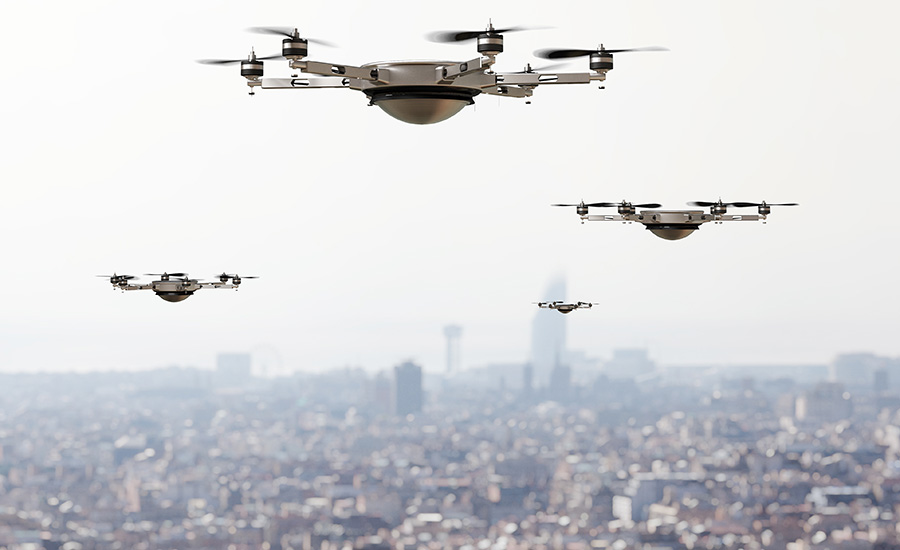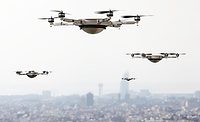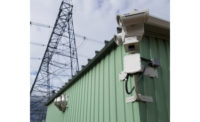What to Do About Drones? Detect, Identify, Respond
Because of the danger posed by the misuse of UAVs, new technology mitigates potential drone threats.

Drones (UAVs) have been around for many years, but with the wide adoption that is beginning to occur new conflicts have arisen that are causing heightened awareness of the potential threat that this technology can pose to physical security and critical infrastructure. The new FAA projection of 30x commercial drone growth to 600,000 over the next year gives context to the size of this growing issue.
These threats range from people using them as a means to spy on celebrities, interfere with fire-fighting efforts, flying over sporting events, attack the power grid and the most unsettling potential of weaponizing drones and using them as flying IEDs.
Because of the danger posed by their misuse, new technology advancements mitigate potential drone threats. All of these technologies can be categorized in three categories: Detect, Identify and Respond.
Detect
There are four main types of detection sensors: optical/thermal cameras, acoustic, radio and radar. Cameras and acoustic sensors are heavily affected by weather conditions such as snow, rain and fog and have limited range capabilities making them effective for ranges of less than 100 meters, which is only a few seconds when the drone is flying at 35 mph – a speed easily obtained by even a low-end quadcopter.
Radio sensors listen to the radio communication between the drone and the controller when and if the drone is being actively controlled by an operator. Because drones are able to operate autonomously with no communication to the controller, radio sensors are not always able to detect them. Radio sensors can cover wide areas as long as there are not a lot of other radio transmitters (WiFi access points, etc) in the area. Otherwise, the radio signal of the drone can be lost among all of the background RF signals.
Radar has been in use to detect airborne targets for over 75 years, but at a high cost. Radar penetrates through poor weather conditions, but in the past was built to detect fast and large planes, not low and slow drones. A relatively new class of radar on the market is called Compact Surveillance Radar (CSR). Developed to pick up small, slow moving targets, it provides precise GPS location information about the target. These more cost-effective, small radars can be pointed up into the sky so that they do not pick up ground clutter. They create an invisible dome of perimeter protection for air traffic flying at low altitude up to 3,000 feet.
Identification
The next category of a counter drone technology is identification. While acoustics, radar and radio are able to detect and potentially classify the detection as a drone, it is difficult for these technologies to determine the intent of the drone.
If the location of the drone is provided by the detection technology, such as radar, a camera can then be precisely cued to the drone track for evaluation of the potential threat. For instance, to see what type of drone is approaching and if there is any type of visible payload.
Another method to evaluate the intent of the drone is to point a laser dazzler or spotlight on the drone to alert the operator that it is operating in restricted airspace. If the drone proceeds the alarm level can then be escalated.
Response
Technologically, there are a number of ways to respond to drones that range from shooting them out of the air, having drones capture other drones, to having hawks grab them out of the sky, to electronic jamming of the communication link and GPS. Some are considerably easier to accomplish than others, and legal advice should always be sought about such activity in different regions before purchasing or deploying any solutions.
By far the most effective and practical response is jamming of the radio link between the operator and the drone or if the drone is operating on full autopilot mode to jam the GPS receiver in the drone. However, at this time it is illegal in the US to interfere with the operation of a drone in most all cases. This needs to change before an incident occurs that could easily be prevented using technology that is now available.
The only option that is available today is to to find and interdict the operator. While this method is legal, it many cases the damage will have already been done.
Conclusion
Besides the technological questions and capabilities, there is a greater problem with how to respond to drones determined to pose a potential threat – the regulatory and legal issues surrounding the interception or mitigation of drones.
Our nation’s laws need updating to allow drones to be intercepted by a variety of methods around critical infrastructure and where lives are being endangered. Currently, in the U.S. there is a congressional bill, HR 636, now signed into law, which authorizes the FAA to conduct a pilot project to detect and mitigate UAS (drones). This pilot project should be quickly used to cover critical sites such as dams, stadiums, bridges, electrical substations across the nation.
Looking for a reprint of this article?
From high-res PDFs to custom plaques, order your copy today!








